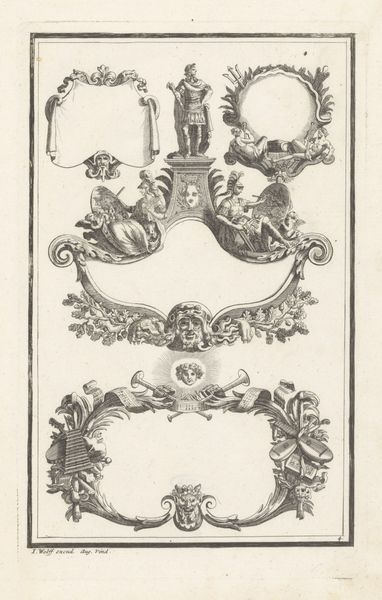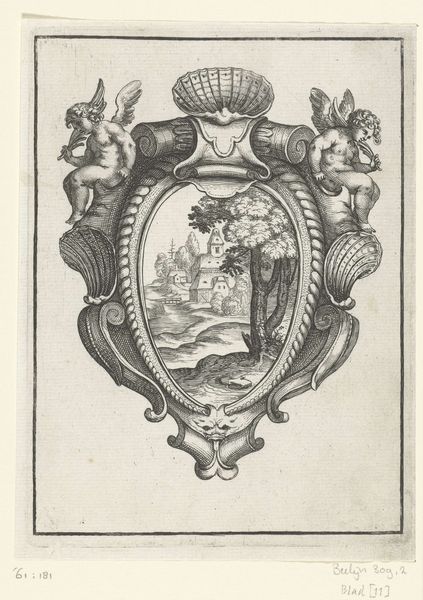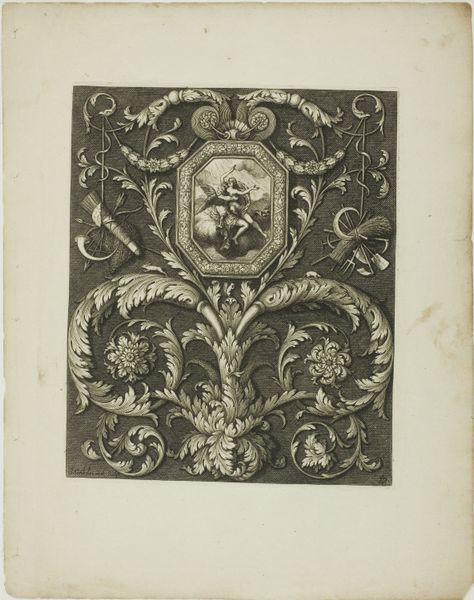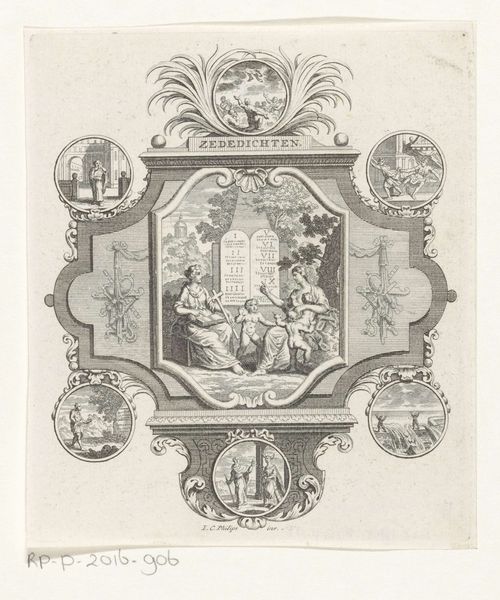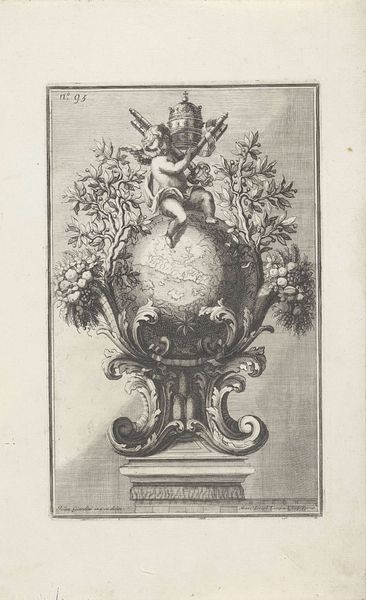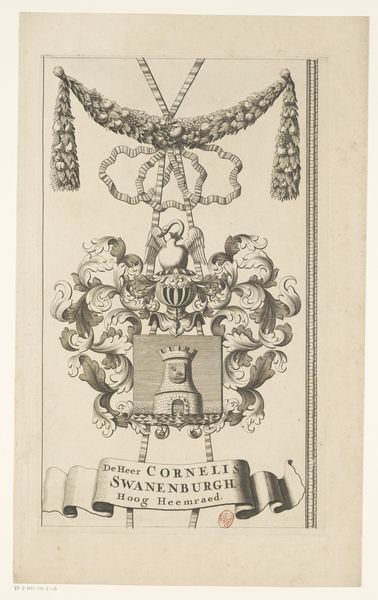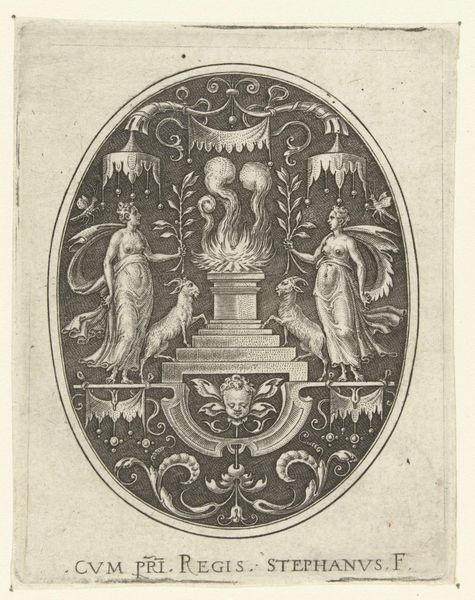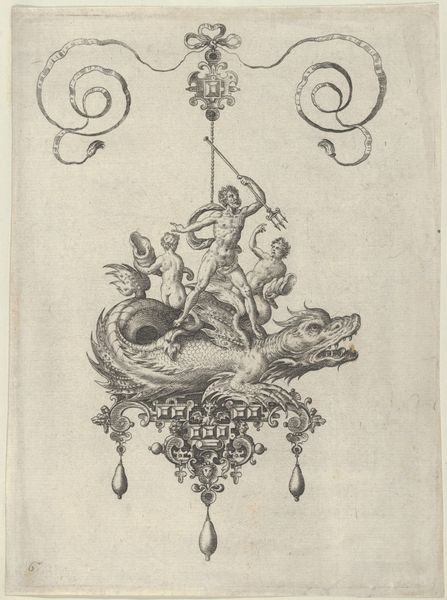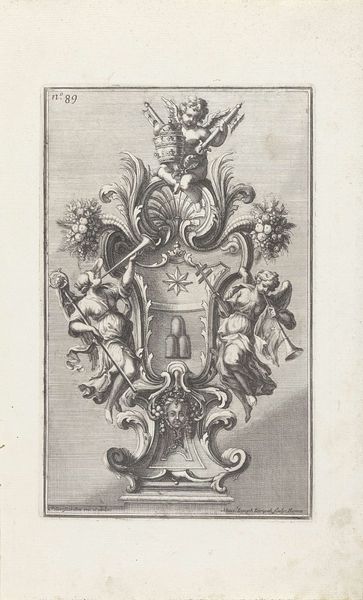
Dimensions: height 197 mm, width 149 mm
Copyright: Rijks Museum: Open Domain
Curator: The engraving we're looking at, "Camee met de triomf van Germanicus en Agrippina," dates back to 1765 and is held at the Rijksmuseum. The work presents an ornate interpretation of a classical theme. Editor: My first impression is one of intricacy. The density of detail, achieved through line work alone, is quite captivating, although it's hard to decipher what is happening. It also makes the piece seem a bit stiff, I suppose. Curator: Consider the socio-political landscape of 18th-century Europe. Engravings like this often served as both art and a form of disseminating knowledge or celebrating figures. Reflect on the artist’s choices, the conscious decision to evoke historical power through visual representation and, potentially, legitimize particular regimes. Editor: The rigid framing of the central image strikes me. Look at the precise geometric border contrasted with the free-flowing decorative elements surrounding it, even up to the coat of arms right at the very top. Do you find a similar tension at play in the depiction of Germanicus and Agrippina, or rather the idealized narrative? Curator: Absolutely. The artwork employs allegory, reflecting on identity, in its very composition, juxtaposing rigid structure and idealized form, thus presenting Germanicus and Agrippina, to embody values which were historically attached to an antique past. How would this representation speak to societal roles and power dynamics of the time? Editor: What I find really striking, compositionally, is the way the central figures command the focal point and also invite the viewers to decode them and understand the artwork as more than just line strokes and tonal gradients. Even though it may also involve history painting elements. It makes one to also admire Baroque lines, from the swirling embellishments of the border down to the controlled precision that really characterizes the image. Curator: Precisely, so the composition operates not just aesthetically but also ideologically. Through art movements inspired by Greek and Roman art the creator and the patron subtly underscore their authority but invite, equally, reflection on their present day. This dialogue across time gives rise to new interpretive opportunities even now. Editor: It is always enriching to focus on pieces that continue to resonate with new interpretations across the years. Curator: Indeed, thinking about engravings like this we may broaden discussions around contemporary notions of legacy in our societies.
Comments
No comments
Be the first to comment and join the conversation on the ultimate creative platform.
